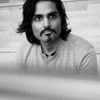In the stillness of photography there is drama, deceit, laughter, construction and questioning of utopia, assertive self-acceptance, manipulation of stories and finally emboldening of the creative and transformative capacity of oneself. When the paradox of stillness yet questioning of perception is allowed to cultivate, photography turns into art and ceases to be barely still. This is what the Focal Points: Art and Photography exhibition at the Manchester Art Gallery achieves in an ample floor space where we can move back and forth to examine these photographs and question our perceptions, about ourselves and how we choose to relate to external images.
This exhibition has been on display since 17th May 2012 and has well deserved to continue over several months in a public art gallery, free of charge, to offer its visitors understanding of the depth and breadth of artistic thought that manages exercising the mechanism of perception, utopia and interpretation of events in our life placed within social context.
Feminist thought is evident in the photographs of Jananne Al-Ani and Pushpamala N. Al-Ani, as a half Iraqi and half Irish woman, questions the portrayal of middle-eastern women by Western photographers where the stereotypes of long dresses, head scarves and faces lacking much expression support the prevalence of the imbalance of power between men and women. Challenging stereotypes, she contemplates whether it is the men and the camera who are instruments of control and manage to turn these women of vitality into powerless beings.
Pushpamala, a 'performance photographer' performs in her own photography as different characters. Three of her photographs on display show her in Christian, Muslim and Hindu wedding dresses where the first two dresses conceal her face whilst the third one is of a bride with her back towards the camera, suggesting perpetual shyness preventing her from revealing her face. She successfully manages an intelligent and intended parody of the portrayal of Asian women; humour turns her message ever bold without the need for much explanation.
An unvarnished self-portrait of John Coplans (1920-2003) displaying his very hairy body folded in a shape is his attempt to confront the social views of old age and wrinkled body as 'ugly'. Our perceptions covered by the posters of gym toned bodies and skinny clothes would initially find it hard to glare at Coplans' photograph, but locked in this picture is an underlined message of accepting oneself exactly how we are.
Photographs do not always capture a snapshot of the real world and can be manipulated, reveals the work of Melanie Manchot, who used the Russian tradition of group photography by assembling strangers in public places where photography is restricted and asked them to pose candidly. Most strangers or groups look in different directions, giving the impression of a real event captured by the camera, but she proficiently achieves a pulse of interconnection amidst parallel stories within the picture.
The most distinct and uplifting of these images is the one of Donald Rodney (1961-1998), titled 'In the House of My Father'. A sufferer of sickle cell anaemia, Rodney took portions of his skin removed during medical treatment to build a tiny house-shaped model and held it on his palm in this picture. It is not just photography but artistic and transformative thought at its play as Rodney's hand is pictured as much larger than the house, built from his skin, where he feels unsafe and uncomfortable. This photograph is the one to leave a lasting and inspiring impact, and there are several more pictures in this exhibition by different photographers to look out for.
